THE GREEN LINE
ORIGINAL STORY
Centring Blackness: “Dis/Mantle” your perceptions of Toronto history
The Spadina Museum exhibit brings together old history with contemporary culture, centring Black culture and uncovering overlooked narratives.
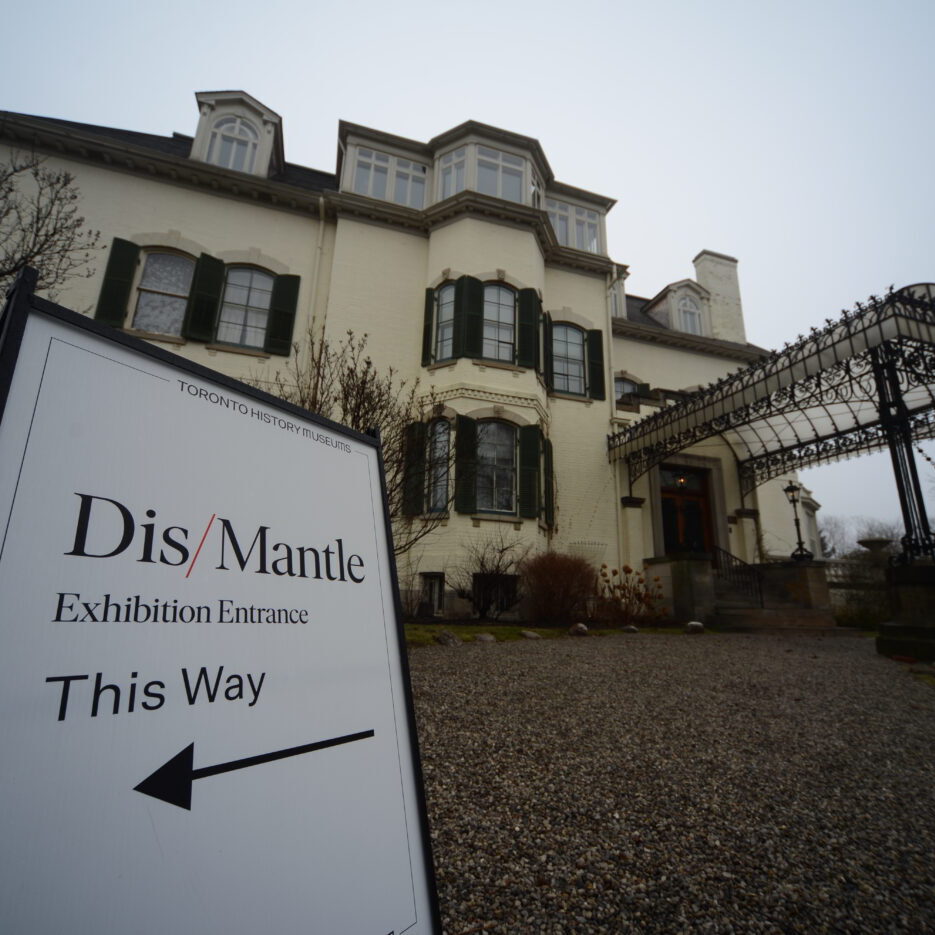
The Dis/Mantle exhibit by lead artist Gordon Shadrach has been extended at the Spadina Museum until May 2023.


ALOYSIUS WONG
Toronto Metropolitan University Master of Journalism graduate. Lives in North York where he prays that the Eglinton Crosstown will eventually be completed.

Mahdis Habibinia
Iranian-Canadian who immigrated to Toronto at age 4. Master of Journalism graduate of Toronto Metropolitan University. Avid true crime binger who wholeheartedly supports the Oxford comma.
January 20, 2023
Guided tours, quaint artifacts, and historical recreations are a part of any museum visit.
But old history meets contemporary culture at Spadina Museum, where the Dis/Mantle exhibit places artistic representations of historical Black figures alongside portraits of Toronto Raptors.
Dis/Mantle is part of the Awakenings program by the Toronto History Museums, a series of art projects by artists who are Black, Indigenous, and people of colour.
The exhibit reframes the Spadina Museum with Mary Louisa Pipkin, the real-life laundress at the house in the 1870s, as the homeowner of the house, which itself is reimagined as a sanctuary for those escaping slavery.
Staff say the response has been overwhelmingly positive since the exhibit first launched in August 2022. It was initially set to close in December, but given the feedback in its first few months, Spadina Museum recently extended Dis/Mantle until the end of May.
“[We’re] asking our visitors to think, ‘Well, what if this is Louisa Pipkin as the homeowner?'” explained Alexandra Kim, the administrator of Spadina Museum. “She was a freedom seeker, a former enslaved person who came to Canada from the [United] States. And we know that in the 1870s she worked as a laundress for the Austin family.”
The Austins were an affluent Toronto family who founded the Dominion Bank of Canada (now known as TD Bank) and lived in the home until 1982. Dis/Mantle shifts the focus of the space from them to highlight Black abolitionists and the efforts of those who escaped and fought against slavery.
“When Mrs. Pipkin and her husband made it to Canada, they sought different ways of getting their [four] children to come to Canada,” says Gordon Shadrach, the lead artist of Dis/Mantle, adding that he included four monarch butterflies in Mrs. Pipkin’s portrait to symbolize her children and her family’s history of migration.
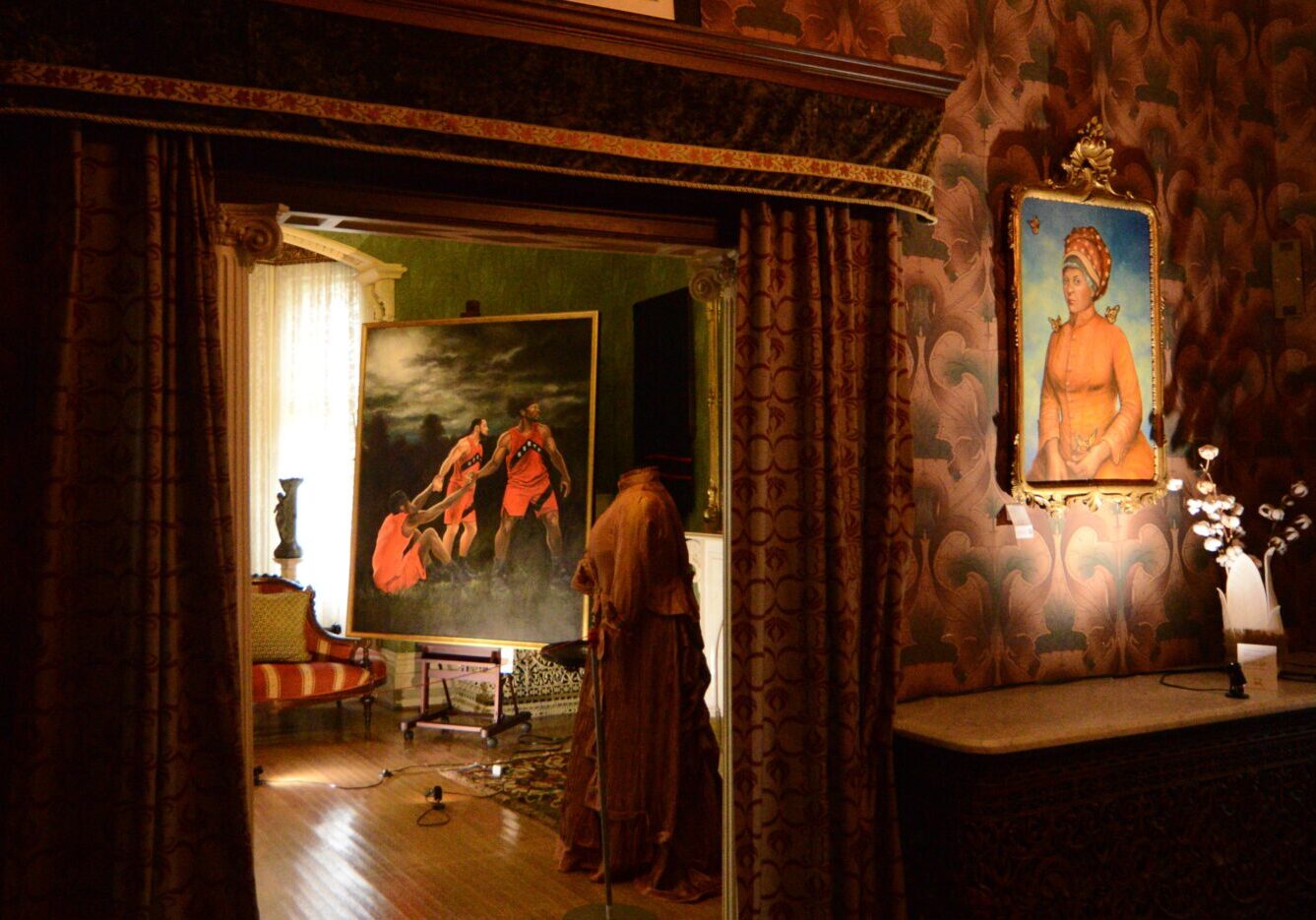
On the main floor of the museum, a large painting of three Toronto Raptors is featured beside a reimagined dress for Mrs. Pipkin.
📸: Aloysius Wong/The Green Line.
Red lines are also prominent throughout Shadrach’s work, who says that they are a reflection on bloodlines, and how they can be interrupted or distorted. Shadrach says they also reference the barriers racialized people face, especially redlining practices in the United States as well as in Canada, even if it wasn’t as well-documented in local history.
The museum also covered up or turned away portraits of the Austin family, to mimic the feeling of erasure many Black communities have felt.
“I decided to cover them up as a way of reflecting and showing people what the feeling of erasure is. With Black people, a lot of our history in North America has been covered up,” Shadrach said. “[I’ve] spoken to some historians who said, like they’ve had to literally dig in attics of libraries to find information that should be more publicly accessible.”
“You want to see more, and you want to learn more, but you can’t, because it’s being covered up, it’s being taken away from you,” he continued.
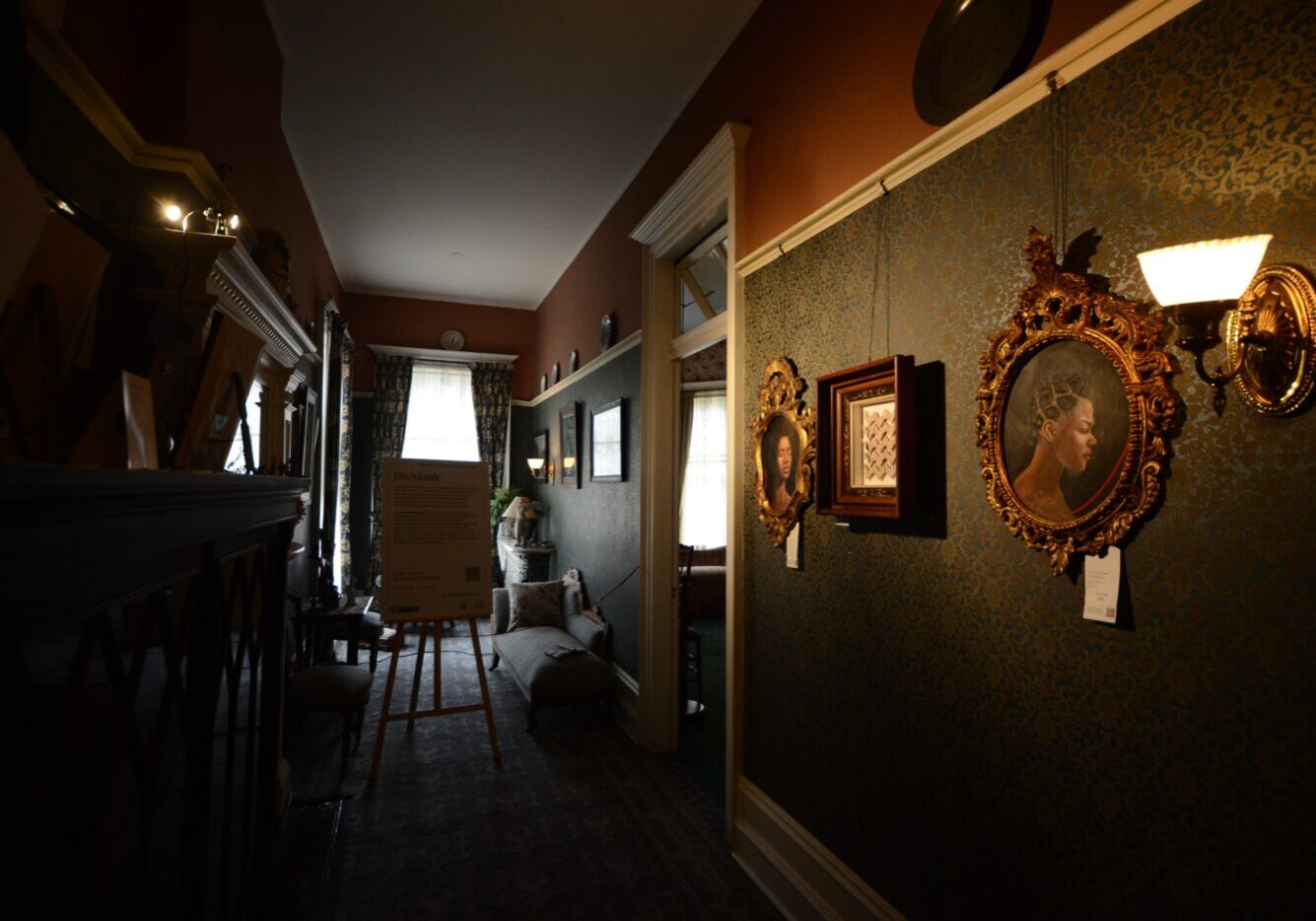
In one hallway of Spadina Museum, commissioned portraits of Black women are highlighted (right) while portraits and photographs of the Austin family are covered or turned away (left).
📸: Aloysius Wong/The Green Line.
“It really made you think about how the European history is often the history we see, and it was almost a bit disturbing not to be able to see the full history,” said Helga Shield, a visitor from Calgary.
Kim says that the exhibit has been positively received, both by visitors who found themselves pleasantly surprised by the alternative narratives presented by art, and by members of the Black community who saw themselves represented in the exhibit. Dis/Mantle, she says, has also provided a space for people to have conversations on issues like systemic racism which may be challenging to approach in other forums.
“I wasn’t expecting … a historical take that was colorblind,” said Maria Hupfeld, an assistant professor of Indigenous digital arts and performance at the University of Toronto, who visited the exhibit on Saturday. “Seeing the switch-up where we’re centering Blackness within this historical building that has another kind of history connected to it was exciting.”
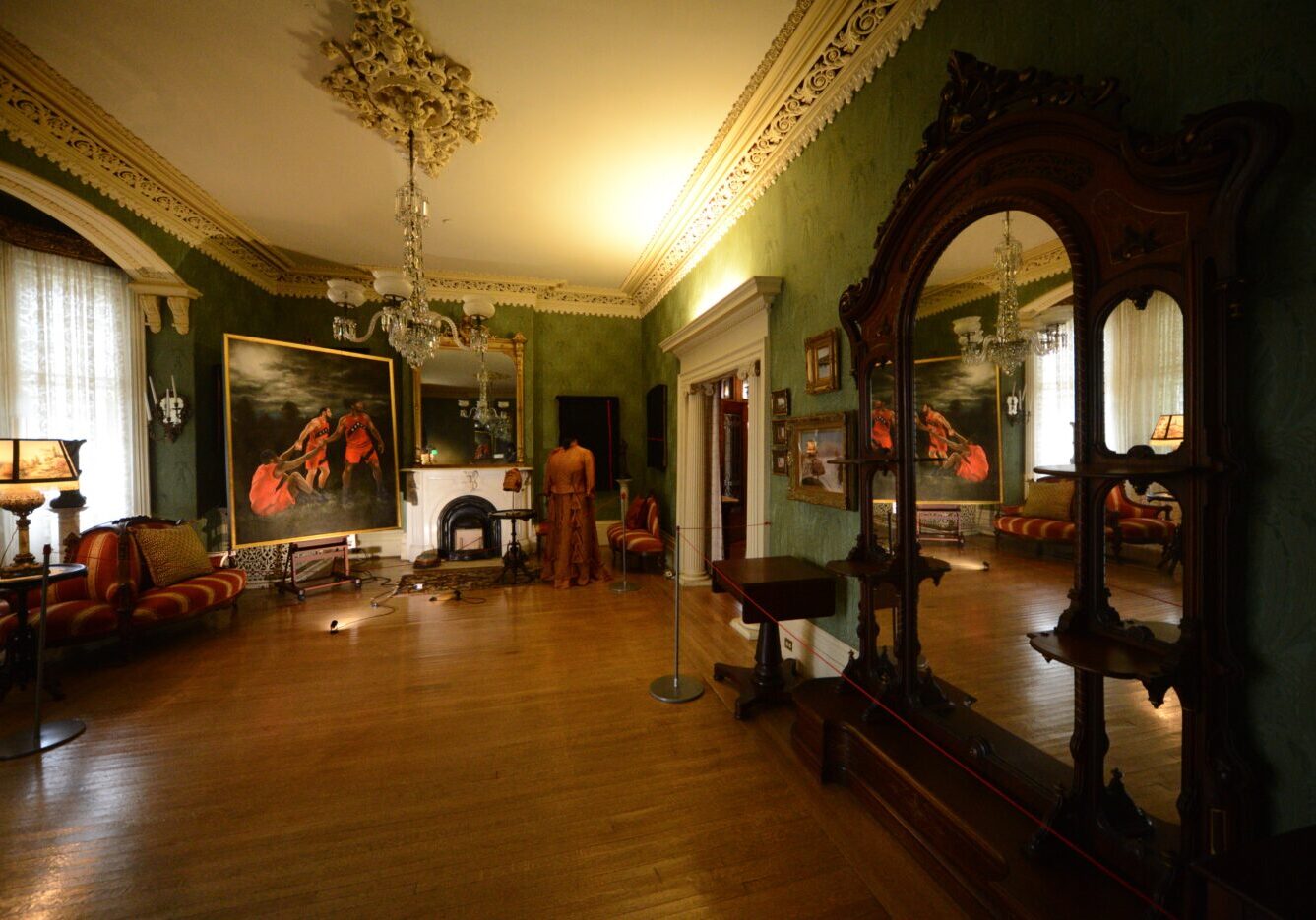
On the main floor of the museum, a large painting of three Toronto Raptors is featured beside a reimagined dress for Mrs. Pipkin.

Shadrach says he’s also received positive feedback from the Black community. “People have also said that for them it’s been the first time they’ve ever felt comfortable in a space like that. They’ve never wanted to go into historical museums because they find them kind of creepy.”
“When … you see these portraits that feel like they’ve always been there, and these are people that you know, or you feel like you know, or you see yourself in some way being represented there—it’s a phenomenal feeling for a lot of us,” Shadrach said.
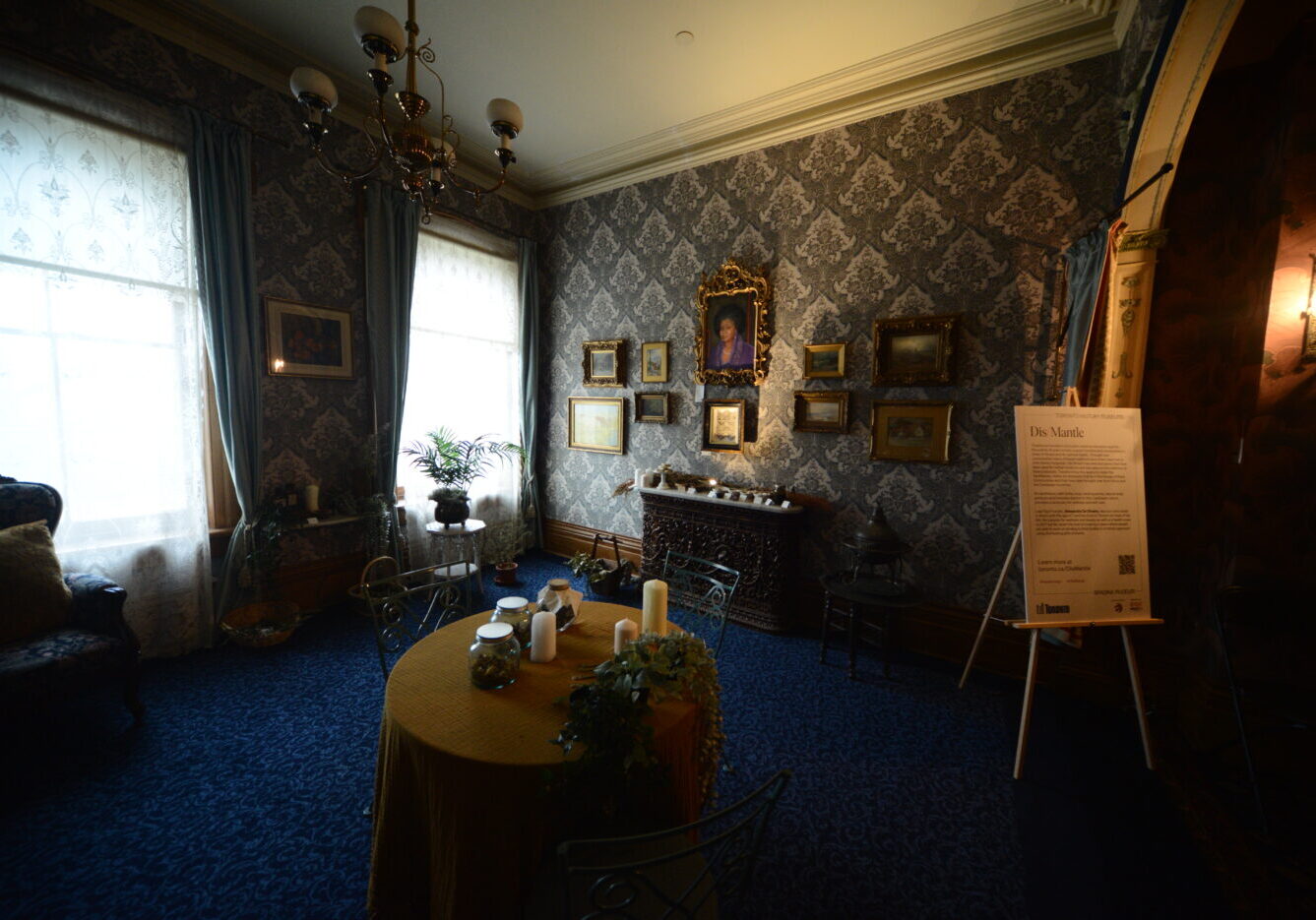
In the salon upstairs, portraits of prominent Black Torontonians fill the room, drawing focus to people who were overlooked throughout history.

The success of Dis/Mantle has motivated the City of Toronto to introduce similar initiatives through the Awakenings program, specifically those that rethink traditional historical narratives in other Toronto history museums, like Fort York.
“Dis/Mantle is right in the middle of work that we’re doing where we really want to think about whose stories are being told in our spaces,” said Kim. “So, we really want to think about how elements of Dis/Mantle could be found in other museums.”
“We really want to make sure that all of those different voices are part of the narrative that we’re telling and that we have real connections between the past,” continued Kim.
Shadrach, likewise, hopes Dis/Mantle will tour and that other historical places will consider similar projects, adding that his experience with this exhibit has been “very affirming,” especially as a Black artist who has felt invisible to many organizations throughout the years.
“It’d be an incredible experience to transform other spaces,” he said.
The Dis/Mantle exhibit is free to view at the Spadina Museum until Sunday, May 28, 2023. An “Artist Talk” with Gordon Shadrach will take place on Feb. 4, 2023 from 1 to 3 p.m.
Fact-Check Yourself
Sources and
further reading
Don't take our word for it —
check our sources for yourself.